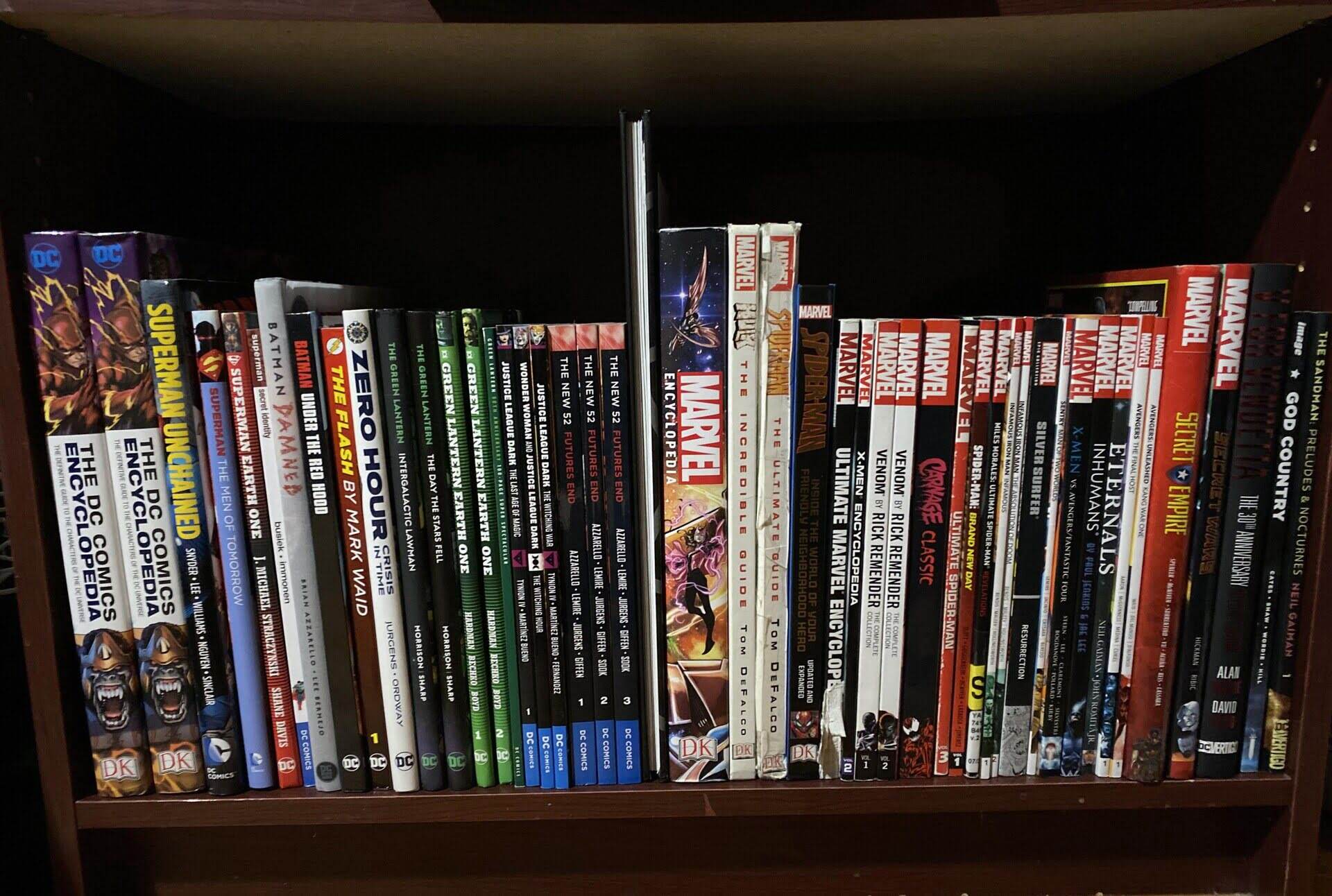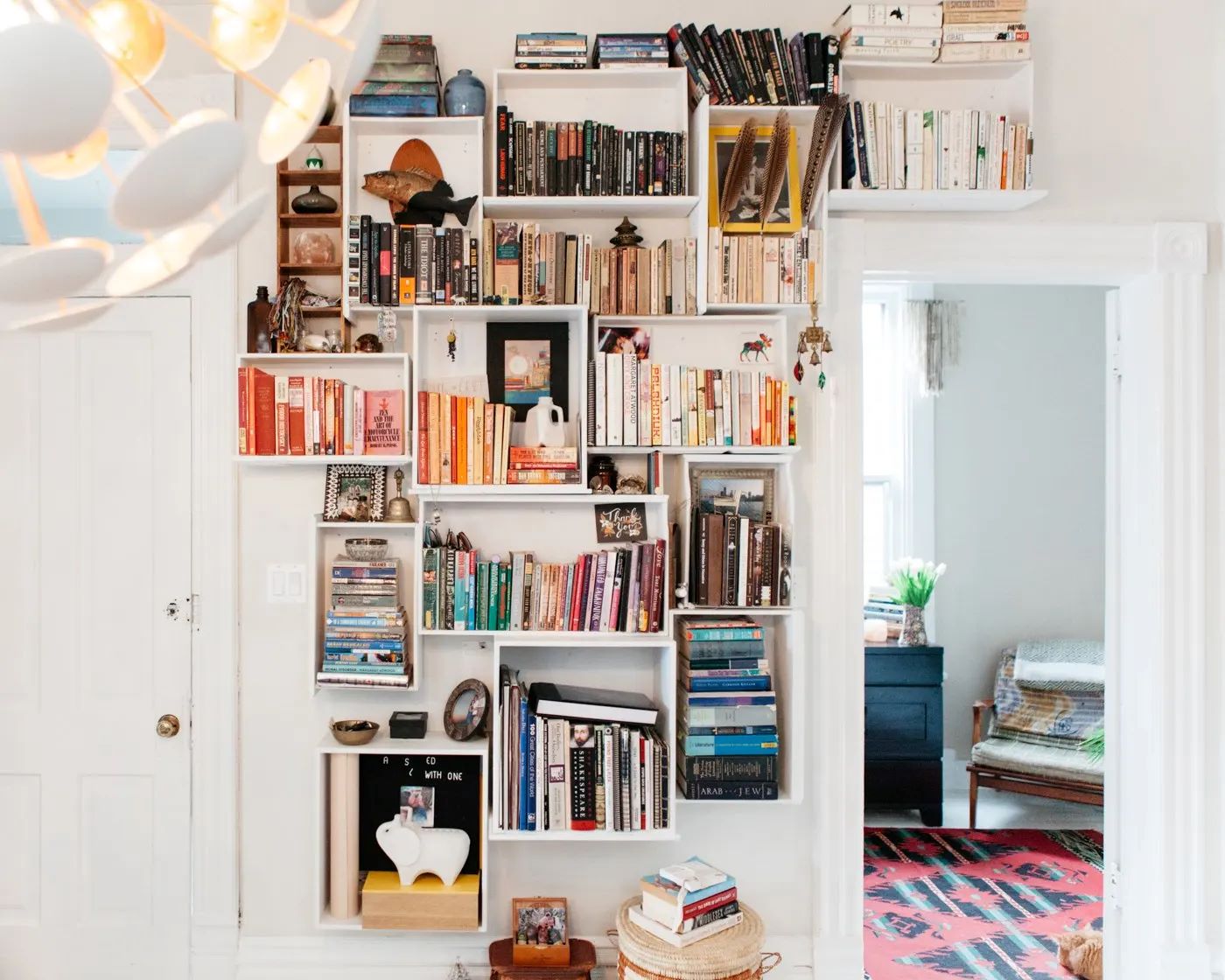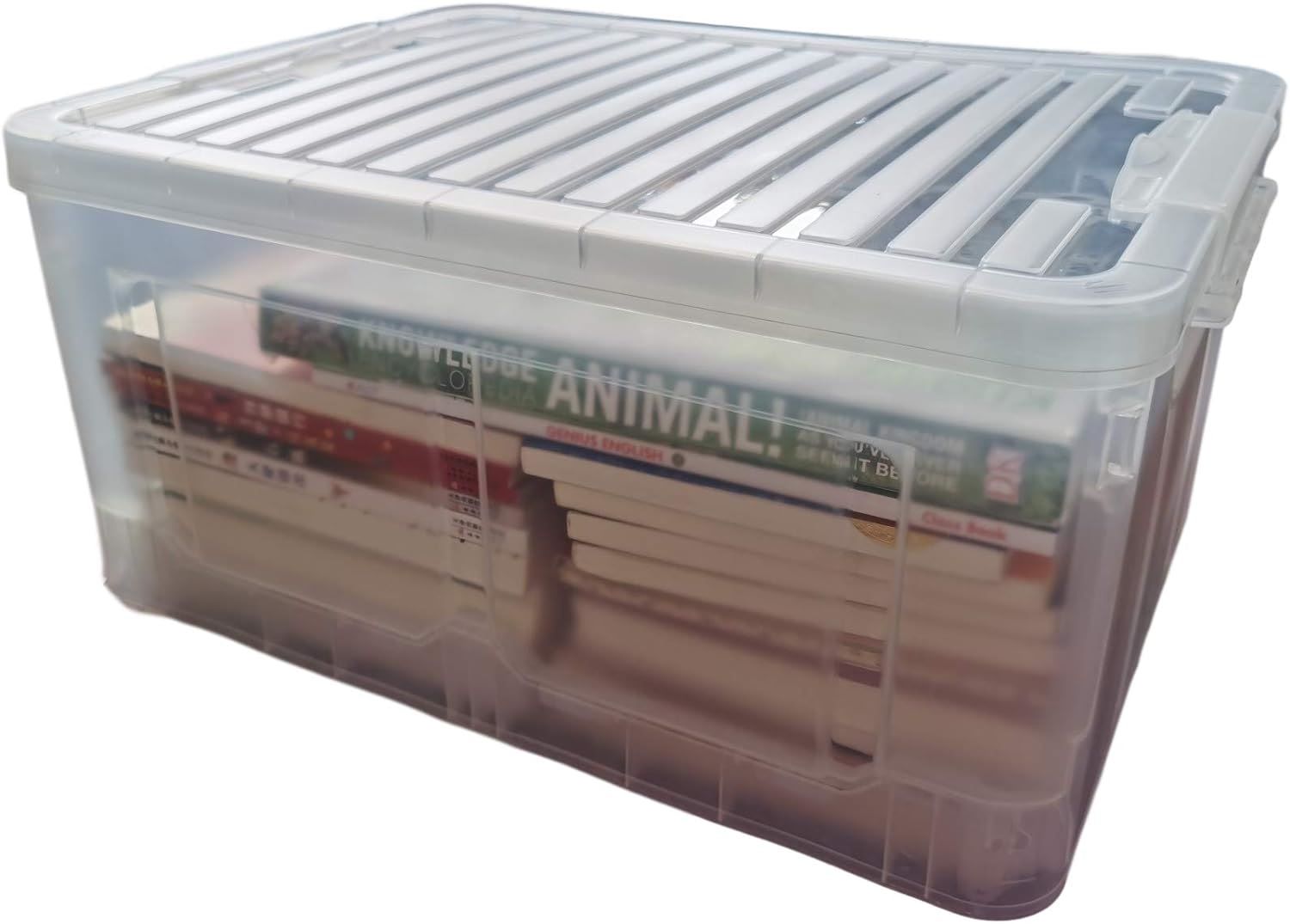

Articles
How To Store Books At Home
Modified: October 18, 2024
Learn how to store your articles and books at home efficiently and keep them in great condition with our helpful tips and tricks. Find out the best methods to organize and protect your precious collection.
(Many of the links in this article redirect to a specific reviewed product. Your purchase of these products through affiliate links helps to generate commission for Storables.com, at no extra cost. Learn more)
Introduction
Whether you’re an avid reader, a book collector, or simply someone who loves to have books around as a form of decor and inspiration, knowing how to store books properly is essential. Books are not just objects; they hold stories, knowledge, and cherished memories within their pages. But improper storage can lead to damage, deterioration, and loss of these valuable treasures.
In this article, we will explore the best practices for storing books at home. We will discuss considerations to keep in mind, such as the importance of choosing the right bookshelves, arranging books by size or theme, and organizing them alphabetically. We will also delve into implementing a system for tracking your books and avoiding common storage mistakes that can be detrimental to the condition of your beloved literary collection.
Additionally, we will explore ways to protect your books from damage, including proper handling techniques, preserving book covers, and avoiding exposure to direct sunlight and moisture. Furthermore, we will discuss the concept of creating a cozy reading nook, where you can not only store your books but also enjoy the pleasure of reading them in a comfortable and inviting space.
By the end of this article, you’ll have a comprehensive understanding of how to store books at home, ensuring their longevity, and preserving the joy they bring. So, let’s dive in and discover the art of book storage!
Key Takeaways:
- Optimize your book storage by considering factors like temperature, humidity, and sunlight exposure. Organize your collection by size, theme, or alphabetically, and implement a tracking system to ensure easy access and preservation.
- Create a cozy reading nook with comfortable seating, good lighting, and personal touches. Disconnect from technology and immerse yourself in the joy of reading within your own tranquil sanctuary.
Read more: How To Store Books In Bedroom
Considerations for Book Storage
Before diving into the details of organizing your book collection, it is important to consider a few key factors that will help maintain the longevity and preservation of your books.
1. Temperature and Humidity: Books are susceptible to damage caused by extreme temperature and humidity. Ideally, books should be stored in a cool, dry environment with a temperature range of 60-70°F (15-21°C) and a relative humidity level of around 40-50%. Avoid areas with high moisture, such as basements or attics, as they can promote mold and mildew growth.
2. Sunlight Exposure: Direct sunlight can fade book covers and cause pages to become brittle. When choosing a location for your bookshelves, opt for an area away from direct sunlight. If that’s not possible, consider using UV-protective covers or blinds to minimize sun exposure.
3. Dust and Pest Control: Dust can accumulate on books, leading to discoloration and potential damage. Keep your bookshelves clean and dusted regularly. Additionally, take measures to prevent pests like insects or rodents from accessing your books. Consider using traps or repellents if necessary.
4. Handling with Care: Always handle books with clean hands to prevent oils, dirt, and sweat from transferring onto the pages. Avoid bending or folding pages, and use a bookmark or gentle finger placement to mark your place instead of dog-earing the pages.
5. Bookends and Support: Use sturdy bookends to keep your books upright and prevent them from leaning or falling over. This will help maintain the integrity of their spines and prevent unnecessary stress on the bindings.
6. Adequate Space: Allow sufficient space between books on the shelves to prevent overcrowding. Overcrowding can cause books to warp, and make it difficult to remove or return them without causing damage.
By considering these factors, you can create an optimal storage environment for your books, ensuring their longevity and preserving their condition for years to come.
Choosing the Right Bookshelves
The type of bookshelf you choose plays a crucial role in maintaining the condition and accessibility of your books. Here are some factors to consider when selecting the right bookshelves for your collection:
1. Material: Bookshelves are available in various materials, including wood, metal, and plastic. Wood bookshelves are popular for their durability and classic aesthetic appeal. Metal shelves offer a modern and industrial look, while plastic shelves are lightweight and easy to clean. Consider the style that best suits your preferences and the overall decor of your home.
2. Size and Dimensions: Measure the available space in your home to determine the appropriate size of bookshelves. Consider both the width and height, as well as the depth of the shelves. Ensure that they fit in the designated area and provide enough space to accommodate your current collection with room for growth.
3. Shelf Adjustability: Adjustable shelves offer flexibility in arranging books of varying sizes and allow for future reorganization. Look for bookshelves with adjustable shelf heights or removable shelves to accommodate taller books or decorative items.
4. Sturdiness: It is essential to choose bookshelves that can support the weight of your books without bowing or collapsing. Check for shelves made of strong materials and ensure that the construction is sturdy and solid.
5. Accessibility: Consider the ease of accessing your books when selecting bookshelves. Opt for shelves with open-back designs or ones that provide easy access from multiple sides. This will make it convenient to browse and retrieve books without causing potential damage.
6. Style and Aesthetics: Bookshelves can be a beautiful addition to your home decor. Consider the style and design that aligns with your personal taste and complements your interior design. From sleek and minimalist to ornate and vintage-inspired, there are countless options available to suit any aesthetic.
By carefully considering these factors, you can choose bookshelves that not only provide practical storage solutions but also add charm and beauty to your home.
Arranging Books by Size or Theme
Once you have chosen the right bookshelves, the next step is to organize your books in a way that makes them visually appealing and easy to find. There are two main approaches to consider: arranging books by size or arranging them by theme.
Arranging by Size: One of the simplest ways to arrange books is by size. Group books of similar dimensions together, creating a visually pleasing and organized display on your bookshelves. Place larger, oversized books on the bottom shelves or horizontally to prevent them from overwhelming smaller books. This method is efficient and makes it easier to spot specific books based on their size.
Arranging by Theme: If you prefer a more thematic arrangement, organize your books based on their genre, subject matter, or the purpose behind their use. For example, you can create sections for fiction, non-fiction, self-help, art, history, and so on. Within each category, consider subcategorizing based on more specific themes or authors. This method makes it easier to locate books based on their topic and creates a cohesive and curated collection on your bookshelves.
Whichever method you choose, ensure consistency throughout your arrangement. Align the spines of the books flush with the edge of the shelves for a clean and uniform look. Consider using bookends or decorative objects to separate different sections or to add visual interest to your display.
Remember, the goal of arranging your books is not only to make them visually appealing but also to help you find the books you want with ease. Regularly assess and update the arrangement as your collection grows or as your interests evolve.
By organizing your books by size or theme, you’ll create an inviting and functional book display that reflects your personal style and makes exploration of your collection a joyous experience.
Organizing Books Alphabetically
One of the most popular and efficient methods of organizing books is alphabetically. Alphabetizing your book collection allows for easy navigation and retrieval of specific titles or authors. Here are some tips for organizing your books alphabetically:
1. Sort by Last Name: When organizing books by author, use the author’s last name as the primary sorting factor. For example, books by J.R.R. Tolkien would be filed under “Tolkien” rather than “J.R.R.” This standardizes the sorting process and makes it easier to locate authors by their last names.
2. Ignore Articles: Ignore articles such as “A,” “An,” and “The” when alphabetizing book titles. For instance, a book titled “The Great Gatsby” would be filed under “G” for “Great” rather than “T” for “The.” This practice streamlines the alphabetization process and avoids confusion when searching for specific titles.
3. Break Down Author Names: If you have multiple books by the same author, you can further break down the sorting by using the author’s first name or initials. This helps differentiate books by authors with the same last name. For example, books by Jane Austen would be filed under “Austen, Jane,” while books by John Austen would be filed under “Austen, John.”
4. Consider Series Order: If you have books that belong to a specific series, it can be helpful to organize them in chronological or numerical order within the author’s section. This way, you can easily follow the progression of the series and ensure all books are grouped together.
5. Use Dividers: To keep your alphabetized collection neat and organized, consider using dividers or tabs to separate sections. You can use pre-made dividers or create your own by labeling index cards or sticky notes with each letter of the alphabet. This aids in quickly locating specific sections of your collection.
Remember to regularly update and maintain your alphabetical organization as you acquire new books. This ensures that your collection remains organized and easy to navigate.
Organizing books alphabetically provides a systematic and convenient way to find exactly what you’re looking for in your collection. It also gives your bookshelves a visually pleasing and orderly appearance.
Store books in a cool, dry place away from direct sunlight to prevent damage from moisture and fading. Use bookends to keep them upright and avoid overcrowding shelves to prevent warping.
Read more: How To Store Old Books
Implementing a System for Tracking Books
As your book collection grows, it becomes imperative to have a system in place to track and manage your books effectively. By implementing a tracking system, you can easily keep a record of the books you own and ensure that none of them go missing. Here are some tips for setting up a book tracking system:
1. Excel Spreadsheet: Create a simple Excel spreadsheet or use a book inventory template to track details about each book, such as title, author, genre, publication date, and location on your bookshelves. This allows you to have a digital record of your collection and easily search for specific books or filter them based on various criteria.
2. Library Management Apps: Utilize library management apps and software that are specifically designed for book cataloging and tracking. These apps often have features like barcode scanning, which enables you to quickly add books to your inventory by scanning their ISBN or barcode. Some popular library management apps include Goodreads, LibraryThing, and Book Catalogue.
3. Manual Book Labels: Consider adding small labels or stickers to your books with unique identifiers, such as numbers or codes. Keep a corresponding record of the labels and their corresponding book titles in a separate notebook or spreadsheet. This method allows you to physically track your books and ensure that they are returned to their designated spots on the bookshelves.
4. QR Codes: Create QR codes for each of your books and associate them with their respective details in a digital tracking system or app. This method can be particularly useful if you lend out your books to friends or family, as you can easily scan the QR code to identify the book and keep track of its circulation.
5. Book Cataloging Software: Explore specialized book cataloging software that allows you to manage and organize your book collection efficiently. These software options often provide features like cataloging, tracking, and lending management. Some popular examples include Book Collector, All My Books, and Delicious Library.
6. Physical Book Log: Maintain a physical, handwritten book log or journal where you write down details about each book as you acquire or read them. Include the title, author, date acquired, and any additional notes or comments. This method provides a tangible record of your reading journey and serves as a reminder of the books you own.
Choose a tracking system that fits your preferences and needs. Remember to update your tracking system regularly as you add new books to your collection or lend books to others. By implementing a system for tracking books, you can stay organized and ensure that your cherished books are accounted for.
Avoiding Common Book Storage Mistakes
Proper book storage goes beyond simply placing books on shelves. To ensure the longevity and preservation of your books, it’s important to avoid common storage mistakes that can inadvertently cause damage. Here are some common mistakes to avoid:
1. Storing Books in Direct Sunlight: Sunlight can fade book covers and cause pages to become brittle over time. Avoid storing books in areas exposed to direct sunlight, such as near windows. If you have limited options, consider using UV-protective covers or blinds to minimize the impact of sunlight.
2. Overstuffing Shelves: Overcrowding bookshelves can lead to unnecessary pressure on books, causing them to become misshapen or damaged. Avoid overstuffing shelves and leave enough space between books for proper air circulation. This not only protects the physical integrity of the books but also makes it easier to remove and return them without causing harm.
3. Using Acidic or Low-Quality Materials: When it comes to book storage accessories such as boxes, containers, or bags, opt for acid-free or archival-quality options. Avoid using materials that contain acids or low-quality plastics, as they can degrade over time and transfer damaging substances to the books. Acid-free materials help preserve the condition of your books by preventing acid-induced deterioration.
4. Ignoring Temperature and Humidity: Extreme temperature and humidity conditions can be detrimental to your books by promoting mold, mildew, and deterioration. Avoid storing books in areas that experience high levels of heat or humidity, such as attics or basements. Aim for a consistent temperature of around 60-70°F (15-21°C) and a relative humidity level of 40-50%.
5. Improper Handling and Care: Mishandling books can cause irreparable damage, such as torn pages or broken spines. Always handle books with clean, dry hands to avoid transferring oils, dirt, or moisture. Avoid folding pages, dog-earing corners, or using excessive force when opening or closing books. Use bookmarks or gentle finger placement to mark your place.
6. Neglecting Regular Cleaning: Dust can accumulate on books, leading to discoloration and potential damage. Regularly dust your bookshelves to minimize dust buildup. Consider gently wiping the covers and spines of books with a soft cloth or brush to remove any accumulated dust. Be cautious not to apply excessive pressure or use harsh cleaning agents that may harm the books.
By following these tips and avoiding common storage mistakes, you can ensure that your books remain in excellent condition for years to come.
Protecting Books from Damage
Books hold a special place in our hearts, and protecting them from damage is essential to preserve their longevity and value. Here are some tips to help safeguard your books:
1. Clean Hands: Always handle books with clean hands to prevent oils, dirt, and sweat from transferring onto the pages. Wash and dry your hands thoroughly before touching your books.
2. Book Covers: Protect your books by using book covers. Clear, archival-quality covers keep dust, moisture, and other contaminants away from the covers and pages. Plastic covers can be easily purchased or DIY covers can be made using acid-free materials.
3. Proper Shelving: Ensure your bookshelves are sturdy and can support the weight of the books without sagging or collapsing. Avoid overcrowding the shelves as it can lead to damage. Use bookends to keep books upright and prevent them from leaning or falling over.
4. Climate Control: Maintain a consistent and moderate environment for your books. Extreme temperature changes and high humidity can cause mold growth and book damage. Avoid storing books in basements, attics, or areas with fluctuating temperatures. Use dehumidifiers or air conditioners to control humidity levels if necessary.
5. Avoid Sunlight Exposure: Protect your books from the damaging effects of sunlight. Prolonged exposure can fade book covers and cause pages to become brittle. Keep your bookshelves away from direct sunlight, or use UV-protective window films or curtains to minimize exposure.
6. Proper Storage Position: Store books upright or on their side, with even weight distribution. Avoid storing books in a tilted position, as this can lead to misshapen spines and damage over time. If you have large or heavy books, consider laying them flat to prevent stress on the bindings.
7. Pest Prevention: Protect your books from pests like insects and rodents. Regularly inspect your bookshelves for signs of infestations and take appropriate measures to control pests. Keep your storage area clean and free from food crumbs or debris that may attract pests.
8. Limited Handling: Minimize the handling of books whenever possible. Excessive opening and closing of books can weaken bindings and pages. Avoid bending or folding pages and use bookmarks or gentle placement of fingers to mark your spot.
9. Storage Boxes: If you need to store books for an extended period, consider using acid-free archival storage boxes. These boxes provide an additional layer of protection against dust, moisture, and other potential hazards.
By following these tips and implementing protective measures, you can keep your books in excellent condition, allowing you to enjoy them for years to come.
Creating a Cozy Reading Nook
A cozy reading nook is a peaceful retreat where you can immerse yourself in the joy of reading. Creating a dedicated space for reading enhances the overall reading experience and allows you to fully indulge in your favorite books. Here are some tips to help you create a cozy reading nook:
1. Select a Quiet Spot: Choose a quiet area in your home where you can escape distractions and immerse yourself in your reading. It could be a corner of your living room, a spare bedroom, or a cozy alcove.
2. Comfortable Seating: Invest in a comfortable chair or chaise lounge that supports your back and allows you to relax for extended periods. Consider adding cushions or throw pillows for extra comfort.
3. Good Lighting: Ensure you have adequate lighting in your reading nook, especially if you plan to read during evenings or in low-light conditions. Natural light is ideal, so position your reading spot near a window. If natural light is insufficient, use adjustable lamps to create a cozy ambiance.
4. Book Storage: Arrange your favorite books within arm’s reach. Incorporate a small bookshelf or floating shelves nearby so that you can easily grab a new book when you finish one.
5. Cozy Blankets and Throws: Stay warm and cozy by keeping soft blankets or throws within reach. Wrap yourself in warmth as you lose yourself in the pages of your latest reading adventure.
6. Personal Touches: Add personal touches to make your reading nook feel inviting and reflective of your style. Decorate the space with artwork, framed quotes, or small plants. Include a side table for your favorite beverage or a scented candle to create a soothing ambiance.
7. Noise-Canceling or Relaxing Sounds: If you prefer some background noise, consider playing soft instrumental music, nature sounds, or audiobooks to enhance your reading experience. Noise-canceling headphones or earbuds can also help create a quieter environment.
8. Disconnect from Technology: Create a space where you can disconnect from distractions like smartphones, tablets, and laptops. Keep your reading nook a technology-free zone, allowing you to fully immerse yourself in the literary world.
9. Personal Reading List: Keep a list of books you want to read within your reading nook. This can serve as a source of inspiration and remind you of the next captivating book waiting to be explored.
Remember, a cozy reading nook is a personal sanctuary where you can escape into the wonderful world of books. Customize it to suit your preferences and make it a space that brings you joy and tranquility.
Read more: How To Store Antique Books
Conclusion
Proper book storage is essential for preserving the longevity and condition of your beloved books. By considering factors such as temperature, humidity, sunlight exposure, and using the right bookshelves, you can create an optimal storage environment for your collection. Arranging books by size or theme, organizing them alphabetically, and implementing a system for tracking your books make it easier to find and enjoy your favorite titles. Avoiding common storage mistakes and taking steps to protect your books from damage, such as handling them with care and providing proper dust protection, ensure their longevity.
In addition to the practical aspects of book storage, creating a cozy reading nook enhances the overall reading experience. Selecting a quiet spot, comfortable seating, good lighting, and incorporating personal touches create a space where you can fully immerse yourself in the joy of reading. Remember to disconnect from technology and embrace the pleasure of a physical book, while maintaining a personal reading list to keep you inspired and motivated to explore new literary adventures.
By following these guidelines, you can create an organized, beautiful, and inviting space for your books, transforming them into cherished literary treasures within your home. So, take the time to optimize your book storage, create a cozy reading nook, and embark on countless journeys through the pages of your favorite books.
Frequently Asked Questions about How To Store Books At Home
Was this page helpful?
At Storables.com, we guarantee accurate and reliable information. Our content, validated by Expert Board Contributors, is crafted following stringent Editorial Policies. We're committed to providing you with well-researched, expert-backed insights for all your informational needs.














0 thoughts on “How To Store Books At Home”